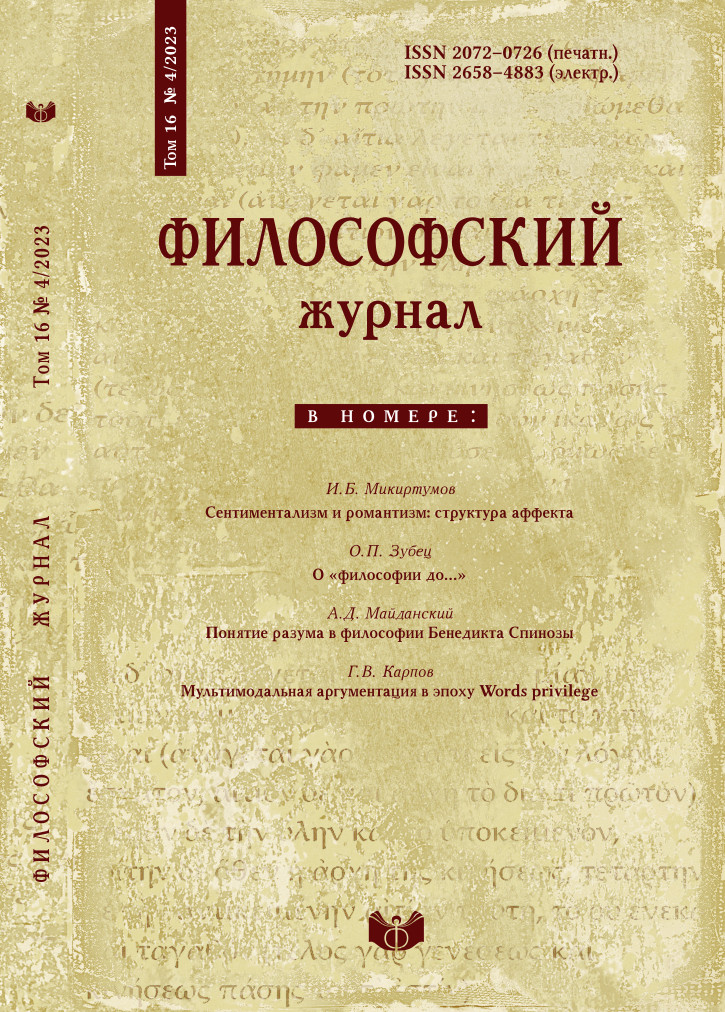Телесное чтение: проблема среды в аналитической антропологии Валерия Подороги
DOI:
https://doi.org/10.21146/2072-0726-2023-16-4-35-54Ключевые слова:
В.А. Подорога, метафизика ландшафта, аналитическая антропология, среда, тело, энактивизм, энактивистская эстетика, воплощенное познаниеАннотация
Статья исследует тему среды в аналитической антропологии Валерия Подороги, предлагая энактивистское прочтение его «Метафизики ландшафта». Аналитическая стратегия «Метафизики ландшафта» противопоставляется стратегии таких более поздних работ, как «Мимесис» и «Антропограммы». Если в более поздних работах приемы анализа задаются разнообразными оптическими понятиями, метафорами и образами, представая, таким образом, стратегией исключающего наблюдения, то в «Метафизике ландшафта» анализ следует скорее движению тела наблюдателя, включенного в среду, и нацелен на реконструкцию совокупного, сенсомоторного, но при этом воображаемого опыта. Три фрагмента текста Подороги, реконструирующие воображаемые тела и ландшафты, вписанные в произведения Киркегора, Ницше и Хайдеггера трактуются как три различных способа сопряжения тела и среды, порождающие три различные модели телесно-средового опыта. Обнаруживая соответствие фрагментов описания этого опыта некоторым ключевым положениям энактивистской эпистемологии и эстетики, автор показывает, что энактивистский подход делает возможной формализацию тех приемов анализа, которые позволяют обнаружить правила зависимости между неким имплицитным модусом письма и телесным опытом чтения.






